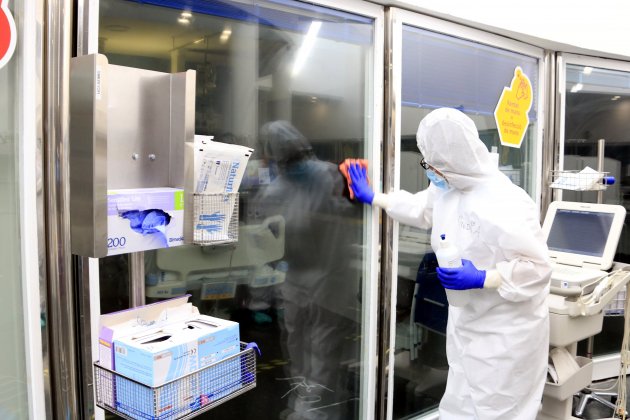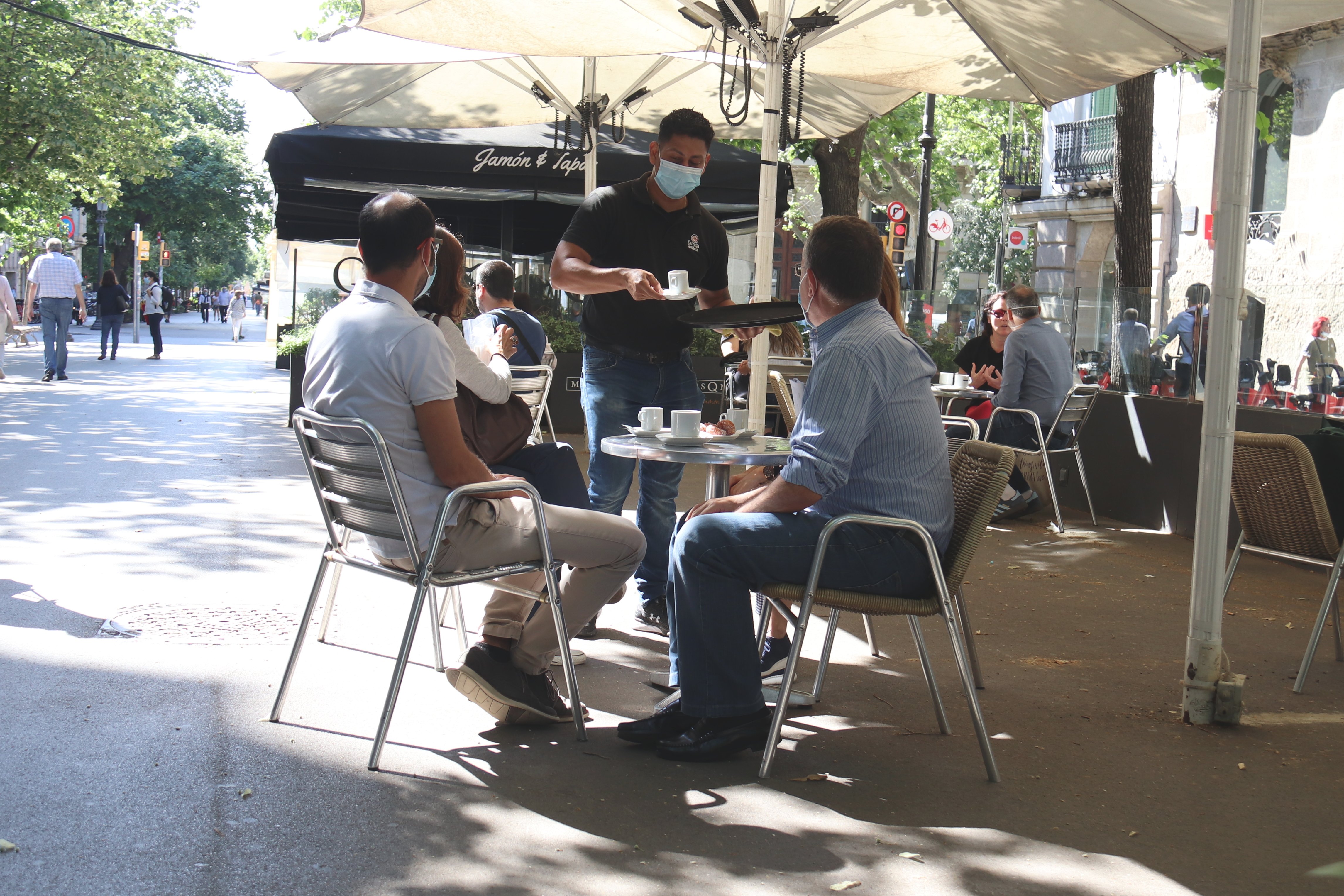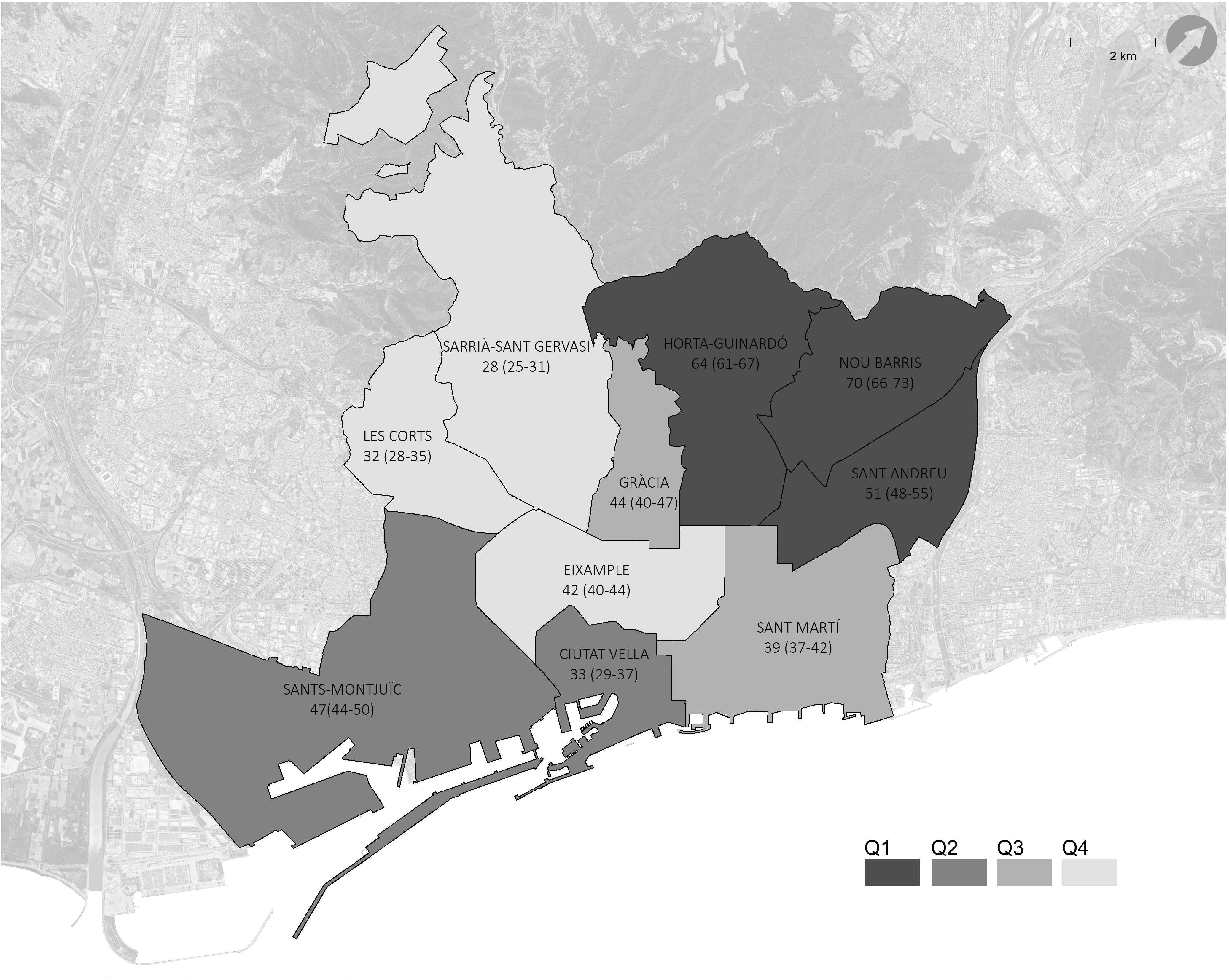The pandemic has once again brought out into the open the inequality that exists in Barcelona, as Covid-19 has extracted a much higher toll in the city's most impoverished neighbourhoods. This has been shown by a study just published in the Journal of Public Health and led by researchers from the Institute for Medical Research (IMIM) at Barcelona's Hospital del Mar along with the University Institute for Research in Primary Care (IDIAP Jordi Gol). A statistic that epitomises the findings: the district of Nou Barris, which has the lowest average income in the city, had an incidence of the coronavirus which was 2.5 times higher than that of Sarrià-Sant Gervasi, the richest area in the city.
To carry out the study, an analysis was made of almost 9,000 cases of coronavirus detected between February 26th and April 19th, the period with the highest incidence of the virus in Barcelona up till now, and this was compared with average income data for each district. The conclusion of the research leaves little room for doubt: the neighbourhoods with lowest average incomes are where the greatest number of confirmed Covid-19 cases are found.

A worker cleans an ICU used by Covid-19 patients at the Hospital del Mar / ACN
District by district
Specifically, the Barcelona district most affected by coronavirus is Nou Barris where 70 cases per 10,000 inhabitants were recorded in the study, followed by Horta Guinardó where the figure is 64 cases per 10,000 inhabitants.
At the other end of the scale are the most well-off neighbourhoods of Sarrià-Sant Gervasi and Les Corts where the virus left an impact of 28 and 32 cases per 10,000 inhabitants respectively. An additional factor is that the residents of these neighbourhoods also tend to have more access to second homes.
Also in the upper part of the ranking is the district of Sant Andreu where 51 cases were registered for every 10,000 inhabitants, the third highest incidence among Barcelona's districts. Neverthless, the IMIM study finds that the correlation with income is less strong in this district than in most others, a fact which the analysis says is likely caused by its relatively youthful population, with one in every four residents under the age of 25.
In the case of Gràcia, the impact was 44 cases per 10,000 inhabitants, in Sants-Montjuïc, 47 cases; in the Eixample, 42; in Sant Martí, 39 cases. Finally, Ciutat Vella provides a second exception to the general pattern. Although it is one of the districts with lowest income, the incidence was only 33 cases per 10,000 inhabitants, a low impact which in this case is attributed to the strong presence of tourism, young people and non-resident foreigners.

A waiter serves clients on Barcelona's Rambla Catalunya / ACN
The poverty-coronavirus relationship
Epidemiologist Dr Maria Grau, a lead researcher on the study, told El Nacional.cat that the study shows that people with a lower socio-economic level are hit harder by the virus. “The [vicious] circle between poverty and disease is clearly visible. This has to be broken one way or another," she said.
In this regard, she reported that during the pandemic it has been seen that people who worked in essential jobs such as supermarkets and factories have the lowest incomes. In addition, many of these jobs cannot be carried out from home, so often these workers have to commute via the metro to get to work. This makes it more difficult for them to follow health recommendations such as staying home or maintaining social distancing on public transport to avoid contagion. "It is essential that they are able to do those jobs safely," she said.
She also pointed out that the conditions are not the best when these people reach their homes, as many in the worst affected districts live in overcrowded or shared houses. She likened the situation to another case, outside Barcelona: "In the Lleida outbreak, one of the focuses has been where the situation is most precarious, among the temporary agricultural workers".
To address this situation, Grau considered that, now that the most vulnerable groups have been detected, the administrations should carry out more efficient communication campaigns on the risks among the populations with the highest incidence rate, as well as putting into practice “more economic efforts” to reduce inequalities among the population. "Health differences need to be made smaller," she said.

